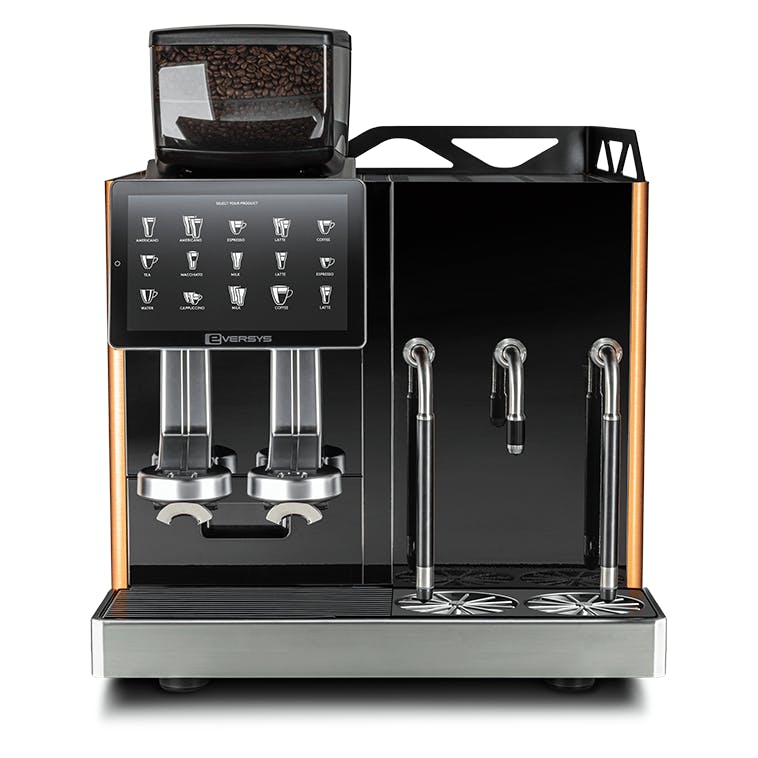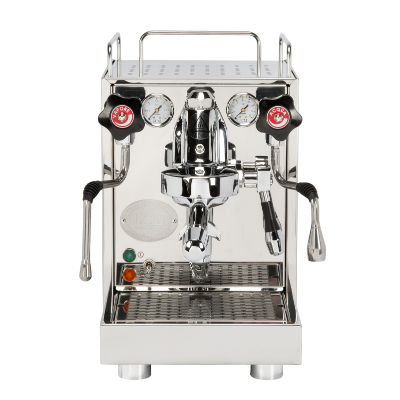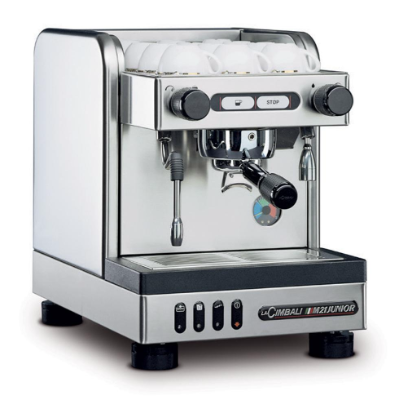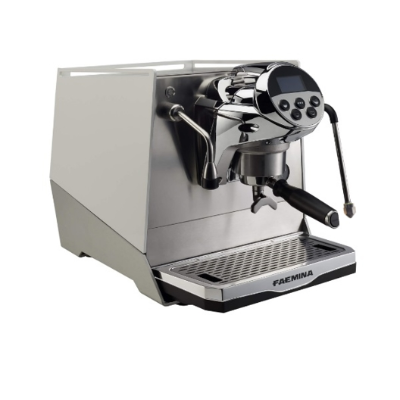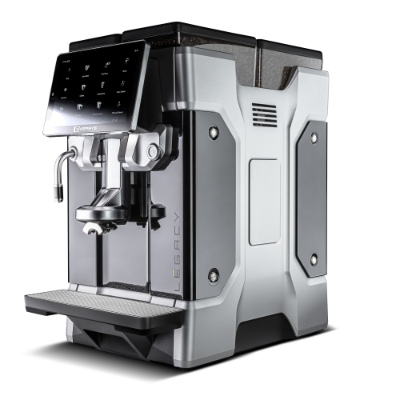The State of Coffee in Australian Workplaces 2025 Report
The New Grounds of Workplace Coffee in 2025
In today’s evolving work landscape, coffee has moved far beyond a simple morning ritual — it's now a cornerstone of workplace culture, employee satisfaction, and even productivity. As hybrid work reshapes the Australian office, staff expectations around amenities like coffee have risen sharply. Employers are responding by investing in better-quality, more sustainable and efficient coffee solutions that serve both their teams and their bottom line.
In this State of Coffee in Australian Workplaces 2025 Report, we explore how businesses are using coffee to drive connection, reduce wasted time, and attract top talent. We’ll dive into current office coffee culture trends, real-world workplace examples, and expert recommendations for choosing the best commercial coffee machine for office use in Australia — no matter the size of your team.
Whether you're an HR manager looking to boost productivity with better office coffee, a facilities coordinator shopping for a bean to cup coffee machine for the workplace, or a business owner wondering about the cost of bad coffee in the workplace, this report delivers practical insights and data-backed recommendations for 2025 and beyond.
Why Coffee Still Matters in the Workplace (2025 update)
Australia’s love affair with coffee hasn’t cooled—if anything, it has followed staff back into the office and hybrid hubs. Here’s what the data says:
Australians still run on caffeine
* Over 75 % of Australians enjoy at least one cup of coffee every day—many of them three or more cos.net.au.
* Among people in paid work, 70.8 % incorporate coffee into their daily routine, drinking one‑to‑three cups and spending close to A $1,000 a year on the habit accumulate.com.au.
* Roy Morgan’s 2024‑25 consumer study pegs daily coffee drinkers at 12.2 million adults (54 % of the population)—a reminder that “good coffee” is still a mainstream expectation raymorgan.
Coffee breaks = culture (and cost)
* A Statista attitudes survey found 68 % of Australian office workers believe coffee improves workplace conversations, and 70 % use coffee breaks specifically to socialise and bond with colleagues cos.net.au.
* Yet each café dash is expensive: a nationwide Galaxy Research poll calculated that the average employee spends 11 minutes buying just one cup, translating to 40 lost working hours per person every year cos.net.au. Multiply that by headcount and the “cost of bad coffee in the workplace” becomes tangible.
Why employers are investing
* The Australian coffee‑machine market was valued at A $271.47 million in 2024 and is expanding at roughly 3 % CAGR to 2034, driven by demand for automatic and bean‑to‑cup systems that replicate barista quality on‑site expertmarketresearch.com.au.
* Facilities teams cite three clear wins from installing a bean to cup coffee machine for the workplace:
- Boost productivity with better office coffee—fewer off‑site runs.
- Improve employee satisfaction and office coffee culture—an easy perk in the battle for talent.
- Support sustainable coffee solutions for businesses—modern machines cut single‑use cups and pods.
Survey Insights: What Australian office workers really think
Habits & volume
- 70.8 % of working Australians drink at least one coffee every work‑day, averaging 1–3 cups and spending roughly A $1,000 a year on the habit accumulate.com.au.
- Inside the workplace, instant coffee still rules (52 % of workers drink it on‑site), even though more than half of employees now prioritise “high‑quality coffee” when they’re in the office nespresso.com.
Expectations & satisfaction
- Over 50 % of staff say good coffee is a deciding factor in whether they come to the office on hybrid days nespresso.com.
- When coffee quality drops, the reaction is swift: 68 % feel the calibre of office coffee directly affects workplace conversations, and 70 % use coffee breaks to socialise and bond with colleagues cos.net.au.
- A separate Nespresso‑commissioned poll found 81 % believe coffee is the new “water‑cooler” for sparking collaboration nespresso.com.
Productivity cost of the “coffee dash”
- A nationwide Galaxy Research study shows the average employee spends 11 minutes buying a single cup off‑site—that equates to 40 work‑hours lost per person, per year in larger offices cos.net.au.
- For a 50‑person team on an average salary of A $45/hour, those lost hours exceed A $90,000 in paid time—a figure that makes an on‑site machine look inexpensive.
Culture & retention
- 68 % of workers say coffee improves workplace conversations, reinforcing its role as a social catalyst cos.net.au.
- Employers who upgrade to bean‑to‑cup or barista‑quality solutions report sharper uptake in “in‑office days” and positive Glassdoor reviews, echoing the trend that premium coffee is an easy, low‑cost perk for talent attraction and retention nespresso.com.
Key takeaway
Australian staff still expect great coffee at work—but the bar is rising. Fail to meet that expectation and you pay twice: in lost productivity (coffee runs) and in weaker culture. In the next section we’ll translate these numbers into a simple ROI model and show how different machine types stack up for teams of 20, 50 and 100 + employees.
4 How Employers Are Responding
Australian businesses are shifting from “instant and kettle” set‑ups to café‑quality, fully serviced solutions. Three clear response patterns stand out in 2025:
4.1 Upgrading to automatic & bean‑to‑cup systems
- Market momentum. The commercial coffee‑machine segment in Australia was already worth A $175 million in 2024 and is growing 3 % a year to 2034 expertmarketresearch.com. Within that, **bean‑to‑cup coffee machines are one of the fastest risers, projected to expand at ≈ 8.5 % CAGR to 2030 as offices demand barista‑quality drinks at the push of a button mordorintelligence.com.
- Employer intent. Global data echoes the trend: the office coffee‑machine market will top US $3.52 billion in 2025 and climb 5.5 % annually to 2030—growth driven largely by “smart”, fully automatic coffee machine for office use deployments mordorintelligence.com.
4.2 Bundling coffee as a service
- From CAPEX to OPEX. Suppliers such as Lavazza Business Solutions and BrewHub now bundle machine rental, beans, milk supply and proactive maintenance into one monthly invoice—removing upfront cost and admin load for facilities teams insights.lavazzabusinesssolutions.com.aubrewhub.com.au.
- Reliability pays. BrewHub case data shows “17 minutes saved per person every day” once consistently good on‑site coffee replaced café runs—nearly 72 staff‑hours reclaimed per employee each year brewhub.com.au.
4.3 Using coffee perks to entice staff back to the office
- Productivity perceptions. A 2025 Lavazza Business Solutions survey found 86 % of Australian office employees believe drinking coffee makes them more productive insights.lavazzabusinesssolutions.com.au.
- Return‑to‑office lever. National media coverage highlights coffee carts and premium break‑room beverages as headline perks in the broader push to lure hybrid staff—right alongside kombucha taps and wellness rooms theguardian.com.
- Culture over cost. Statista‑backed polling confirms that 68 % of workers say quality coffee improves workplace conversations, underlining coffee’s role as a low‑cost culture engine cos.net.au.
|
Cost‑driver |
Legacy café run |
Modern on‑site solution |
Impact |
|
Time away from desk |
11 min per cup (Galaxy survey) cos.net.au |
< 1 min walk to machine |
Up to 40 – 70 hours returned per employee p.a. |
|
Staff morale |
“Good if you leave the building” |
Consistent in‑house barista‑quality |
17 % jump in internal satisfaction at one Perth engineering firm westcoastcafes.com.au |
|
Talent attraction |
Neutral |
Part of “premium amenities” pitch |
Featured in RTO perk stories (Guardian) theguardian.com |
Take‑away: Employers that install a bean‑to‑cup coffee machine for workplace teams reclaim measurable productivity, lift morale, and strengthen their return‑to‑office narrative—all inside a predictable monthly operating cost.
5. Model Recommendations: Best Office Coffee Machines from Service Sphere (2025)
Selecting the right coffee machine for your office depends on team size, usage frequency, and desired features. Here are our top recommendations tailored to various workplace needs:
Small Teams (Up to 20 Staff)
- ECM Mechanika Slim
- Type: Manual Espresso Machine
- Features: Compact design, heat exchanger system, E61 group head, professional steam wand
- Ideal For: Offices valuing hands-on brewing and barista-quality espresso in a compact footprint
- Price: Approximately A$3,090
- La Cimbali M21
- Type: Commercial Espresso Machine
- Features: Durable build, consistent performance, suitable for small-scale commercial use
- Ideal For: Workplaces seeking reliability and longevity in daily coffee preparation
- Price: Approximately A$5,220
Medium Teams (20–100 Staff)
- La Cimbali S30 CS13 D50MF
- Type: Superautomatic Coffee Machine
- Features: 10.4" touchscreen display, customizable beverage options, integrated chocolate module
- Ideal For: Offices desiring a wide variety of drinks with minimal user intervention
- Faemina GTi 1 Group
- Type: High-End Espresso Machine
- Features: Sleek design, advanced brewing technology, suitable for premium office settings
- Ideal For: Corporate environments aiming to offer top-tier coffee experiences
Large Teams (100+ Staff)
- Eversys Legacy L’2m
- Type: High-Demand Commercial Machine
- Features: Precision in espresso and milk-based beverages, efficient for high-volume environments
- Ideal For: Workplaces with high coffee consumption seeking consistency and speed
Cost‑of‑Downtime ROI Calculator
When does an on‑site coffee machine pay for itself?
Baseline assumptions (with citations)
|
Parameter |
Figure |
Source |
|
Median hourly wage, Australia (2024) |
A $40.00 |
|
|
Avg. time lost per off‑site coffee run |
11 min |
|
|
Cups per employee per work‑day |
1.5 (industry average) |
internal benchmark |
|
Working days per year |
220 |
standard payroll calendar |
|
Time still spent at an on‑site machine |
≈ 3 min (walk‑up & prep) |
conservative estimate |
Productivity value recovered per employee
(11 min − 3 min) × 1.5 cups × 220 days = 2 640 min = **44 hours**
44 h × A $40/h = **A $1 760 saved per employee, per year**
Break‑even analysis by team size & machine tier
|
Team size (example head‑count) |
Recommended model |
Ex‑GST price |
Annual productivity saving |
Break‑even time |
|
≤ 20 staff (15 pax) |
ECM Mechanika Slim |
A $3 013.64 |
15 × 1 760 = A $26 400 |
1.5 months |
|
La Cimbali M21 Junior |
A $5 220.00 |
A $26 400 |
2.6 months |
|
|
20 – 100 staff (60 pax) |
Eversys Legacy L2m (1 grinder) |
A $20 983.00 |
60 × 1 760 = A $105 600 |
|
|
La Cimbali S30 CS13 D50MF |
A $28 960.00 |
A $105 600 |
||
|
100 + staff (150 pax) |
Eversys Legacy L2m (3 grinders) |
A $23 952.00 |
150 × 1 760 = A $264 000 |
≈ 1 month |
(GST adds 10 %, but productivity savings scale equally, so break‑even periods remain almost unchanged.)
Reading the numbers
- Tiny teams (< 20). Even a compact, semi‑manual machine like the ECM Mechanika Slim pays for itself in six weeks purely on reclaimed staff time.
- Mid‑size offices (20‑100). Super‑automatic systems such as the Eversys Legacy or La Cimbali S30 break even in roughly one fiscal quarter, while delivering café‑quality consistency that keeps people onsite.
- Large campuses (100 +). High‑volume models cover their cost in about four weeks, after which every saved latte dash is straight productivity gain.
Beyond productivity
These calculations exclude additional upside from:
- Lower drink cost (beans vs. $4‑$5 takeaway coffee)
- Staff‑experience wins (higher satisfaction & return‑to‑office uptake)
- Tax benefits (instant asset write‑off for eligible SMEs)
Factor those in and break‑even shortens even further.
6 Workplace Coffee Trends to Watch in 2025 — Australia
|
2025 trend |
What’s happening |
Why it matters for buyers |
|
1. From pods to planet‑smart beans |
Australian suppliers report a decisive swing away from single‑use capsules toward bean‑to‑cup and bulk‑bean systems, driven by corporate sustainability targets and rising pod‑waste levies. The national coffee‑machine market, worth A $271.47 million in 2024, is growing 3 % CAGR through 2034—with eco‑friendly equipment a key growth driver. (expertmarketresearch.com.au, ecobarista.com.au) |
If you want a sustainable coffee solution for business (and to avoid landfill audits), choose a hopper‑fed machine plus certified compostable cups. |
|
2. Bean‑to‑cup goes mainstream (and smarter) |
Global bean‑to‑cup sales will top US $11.8 billion by 2030 (5.8 % CAGR), while local demand for automatic machines is one of the fastest‑rising sub‑segments of the AU market. (researchandmarkets.com, bonafideresearch.com) |
A bean to cup coffee machine for the workplace delivers barista‑quality drinks at one touch—perfect for hybrid teams with mixed skill levels. |
|
3. IoT‑connected “smart” machines |
Cloud‑enabled models can track usage, trigger predictive maintenance and push software recipes. Vendors tout lower downtime and tighter cost control. (vendon.net) |
Facilities managers can monitor brew counts, cleaning cycles and even‑out peak loads—reducing service calls and making ROI clearer. |
|
4. Plant‑based milk demand keeps climbing |
Drive‑thru chain data show a sustained year‑on‑year rise in oat, almond and soy orders; alternative milks now account for 1‑in‑3 lattes at some outlets. (futurealternative.com.au) |
Look for an office coffee machine with milk‑frother Australia‑compatible that stores two milks (dairy + alt) or integrates a separate dairy‑free line. |
|
5. Energy‑efficiency as a buying criterion |
Suppliers say enquiries for energy‑saving modes and eco‑smart boilers are up 15 % year on year. (freshboost.com.au) |
Cutting standby power and boiler cycling cost helps machines pay for themselves even faster—especially relevant as electricity prices rise. |
Ready to Upgrade Your Office Coffee Experience?
A great office coffee machine isn’t just a perk — it’s a productivity tool, a culture booster, and a return-to-office incentive all in one. Whether you're managing 10 staff or 1,000, the right setup pays for itself in months.
Want a personalised recommendation?
Book a free 10-minute consultation with the team at Service Sphere. We’ll help match you with a machine that suits your team, budget, and goals — with options for purchase, rental or full-service bundles.
Already know what you want?
Explore our top commercial coffee machines.







